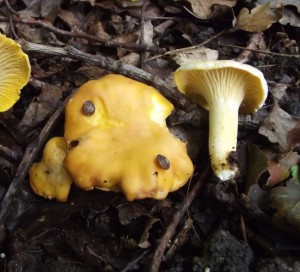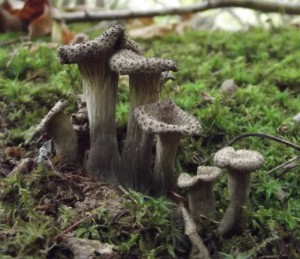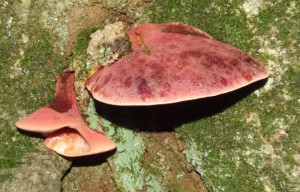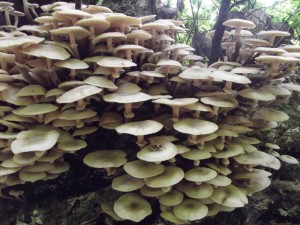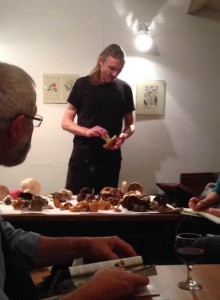Email: geoffdann@hotmail.com
Phone: 07964 569715
27/08/2014
Or more accurately, a splash.
Some years the main mushroom season ramps up slowly into September. In others, drought and high temperatures keep things quite until sometime in September the weather breaks, followed by a sudden burst of fungal activity. This year we’ve had both. It’s been a pretty good August for fungi, without being spectacular, but the recent drop in temperatures and abundant rainfall have combined to trigger all sorts of things into fruiting in the last few days. It’s mushroom mayhem out there.
There’s not much sign of the wood-munchers – there’s a few common and shaggy inkcaps about (both of which are associated with buried, decaying wood), but it’s too early for the majority of the
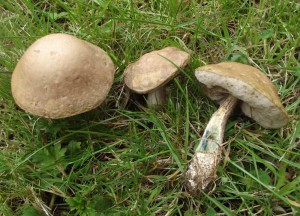
27/08/2014 One of the brown leccinums, and would be mis-identified by most foragers as a brown birch bolete (Leccinum scabrum). It’s probably actually Leccinum cyaneobasileucum. L. scrabrum doesn’t stain blue like this.
species that break down wood, and the ground-dwelling saprophytes (the species that break down dead organic matter in soil) are just poking their heads up, but not yet in vast numbers. It’s the symbiotic fungi that are really going for it, especially the boletes, russulas, milkcaps and amanitas.
Today’s finds included: chanterelles, giant puffball, upwards of ten types of russulas, plenty of blushers, some deathcaps, several Agaricuses, Inocybes, Entolomas, and representatives of all the main groups of bolete. Particularly abundant in my local area right now is Boletus luridus – a technicolour fungus that
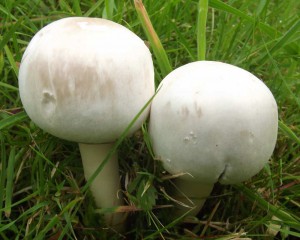
27/08/2014 A pair of young yellow stainers (Agaricus xanthodermus). These are responsible for more poisonings in the UK than any other wild mushroom.
most people assume to be poisonous, but is actually edible.
Anyway…it’s still too early to say whether 2014 is going to be a bumper year for wild mushrooms, but the start has been glorious. I’m very much looking forward to next week, when I’ll be out and about looking for stuff to take to Brighton Food Festival for the Masterclass on the 6th of September.

